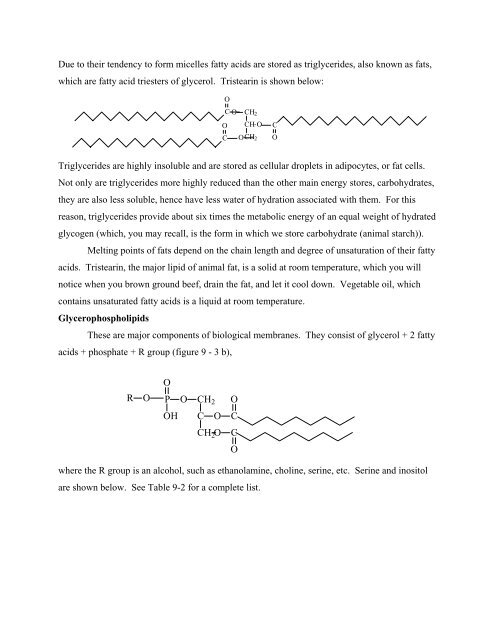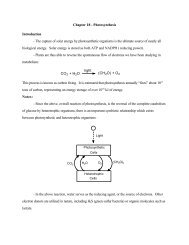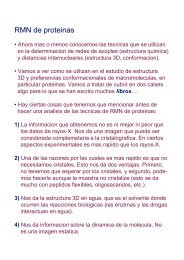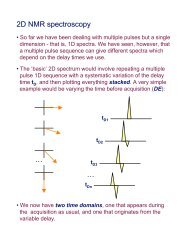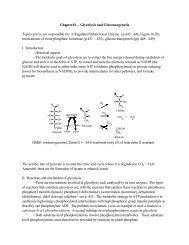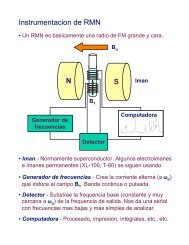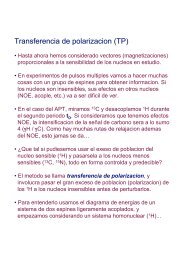Chapter 9 - Lipids and Biological Membranes
Chapter 9 - Lipids and Biological Membranes
Chapter 9 - Lipids and Biological Membranes
Create successful ePaper yourself
Turn your PDF publications into a flip-book with our unique Google optimized e-Paper software.
Due to their tendency to form micelles fatty acids are stored as triglycerides, also known as fats,which are fatty acid triesters of glycerol. Tristearin is shown below:OC O CH 2O CH OC OCH 2COTriglycerides are highly insoluble <strong>and</strong> are stored as cellular droplets in adipocytes, or fat cells.Not only are triglycerides more highly reduced than the other main energy stores, carbohydrates,they are also less soluble, hence have less water of hydration associated with them. For thisreason, triglycerides provide about six times the metabolic energy of an equal weight of hydratedglycogen (which, you may recall, is the form in which we store carbohydrate (animal starch)).Melting points of fats depend on the chain length <strong>and</strong> degree of unsaturation of their fattyacids. Tristearin, the major lipid of animal fat, is a solid at room temperature, which you willnotice when you brown ground beef, drain the fat, <strong>and</strong> let it cool down. Vegetable oil, whichcontains unsaturated fatty acids is a liquid at room temperature.GlycerophospholipidsThese are major components of biological membranes. They consist of glycerol + 2 fattyacids + phosphate + R group (figure 9 - 3 b),OROPOCH 2OOHCOCCH 2 OCOwhere the R group is an alcohol, such as ethanolamine, choline, serine, etc. Serine <strong>and</strong> inositolare shown below. See Table 9-2 for a complete list.


